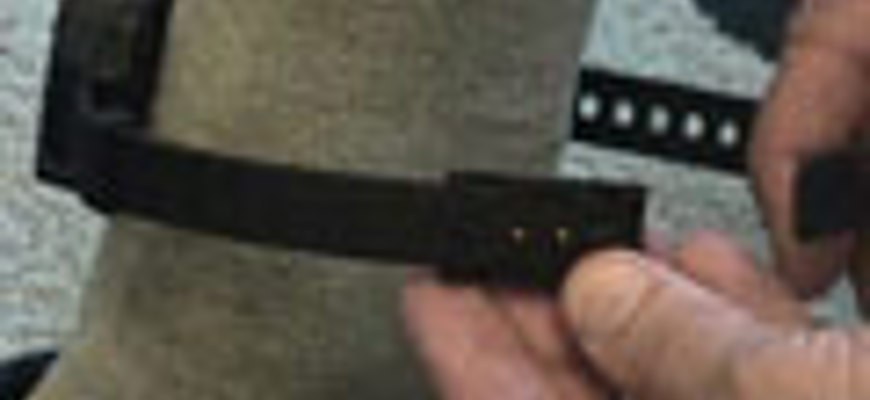Bail pilot takes off

The Scottish Executive is introducing pilot schemes to test the effectiveness of movement restriction conditions supported by electronic monitoring requirements as a condition of bail.
The aim is to test the provisions of section 17 of the Criminal Procedure (Amendment) (Scotland) Act 2004 in:
- reducing the number of accused held on remand in custody who, subject to safeguards in respect of public safety, can be released on bail into the community and
- tightening the supervision of cases involving rape and murder, who are granted bail.
The prescribed pilot courts
From 18 April 2005 the Remote Monitoring Requirements (Prescribed Courts) (Scotland) Regulations 2005 will empower the sheriff courts at Glasgow, Kilmarnock and Stirling to provide that a person who has been refused bail under section 23 of the Criminal Procedure (Scotland) Act 1995 may apply to the court for it to consider admitting him or her to bail subject to a movement restriction condition and a remote (electronic) monitoring requirement under section 24A(1) of the Act (inserted by section 17 of the Criminal Procedure (Amendment) (Scotland) Act 2004). The regulations also prescribe the High Court for hearing appeals against refusals of bail under this section.
In addition section 24A(2) will empower a prescribed court to impose a remote monitoring requirement at its own hand, on a person charged with (or convicted of) murder or rape who is granted bail subject to a movement restriction condition. The prescribed courts are: Glasgow, Stirling and Kilmarnock sheriff courts, the High Court sitting at Glasgow, and the High Court (in practice, sitting at Edinburgh) when it has granted bail to an appellant following an application under section 112 of the 1995 Act.
Transitional arrangements
The regulations shall apply only to cases where one of the following diets occurs on or after 18 April 2005:
- in summary proceedings, a first appearance on complaint;
- in solemn proceedings, a first appearance on petition, a first diet, or a preliminary hearing; or
- on appeal following conviction, an application being made to the court for bail pending the determination of an appeal against sentence or conviction and sentence.
Arrangements for pilots
The pilots will run for a two year period until April 2007 for cases calling in the courts listed above. As electronic monitoring is available across Scotland, accused living outside the jurisdiction of the pilot court can be subject to a movement restriction condition imposed by a pilot court.
A multi-agency steering group with representation from the Sheriffs’ Association, Association of Chief Police Officers Scotland, the Crown Office and Procurator Fiscal Service, the Scottish Court Service, Association of Directors of Social Work and the Law Society of Scotland have produced a model scheme and procedural guidance for the agencies involved in operating the scheme. Local multi-agency liaison groups have also been set up to establish communication links between the agencies and to monitor progress and resolve issues locally. Awareness seminars have been held for the agencies involved in the operation of the pilots.
The proposed procedure
The provisions in the legislation are designed to fit as far as possible within the existing bail process. A person refused bail under section 23 of the Criminal Procedure (Scotland) Act 1995 will be able to apply to the court for consideration for release on bail with the imposition of a movement restriction condition with a remote monitoring requirement. The application under section 24A(1) is not intended to form a separate process/hearing. It is expected that a verbal application will be made by the defence at the time the court refuses bail. In support of the application the defence may wish to convey to the court any reasons/information as to why the availability of a remote monitoring requirement might persuade the court to admit the person to bail. Similarly the prosecutor can be heard.
If on an application the court is considering the imposition of a remote monitoring requirement it must obtain a report from the local authority, and consider information about the place of restriction and as to the attitude of persons likely to be affected by the presence there of the applicant. The court is likely to adjourn the proceedings to allow such information to be provided. The accused will be remanded at this time.
If on receipt of the report the court makes the decision to grant bail, before making the order the court must be satisfied that the applicant understands how the order will work. The court is required to explain to the person the effect of the order, including the requirement to be monitored and the consequences that may follow any failure to comply with the condition.
In indictment or petition cases for rape and murder the court will impose a movement restriction condition supported by a remote monitoring requirement after the decision to grant bail has been made. In post-conviction cases, if bail is granted and a remote monitoring condition is not imposed the court is required to justify its non-use.
Effects of monitoring
Electronic monitoring does not physically prevent an accused breaching the bail condition. A breach of the remote monitoring requirement will be dealt with in the same way as a breach of any other bail condition. The electronic monitoring provider will notify the police who will arrest the accused.
Remote monitoring will be used to monitor compliance with the movement restriction to a specified place or places or from a specified place at times decided by the court. The accused will wear an unobtrusive transmitter (tagging device) on his or her ankle. The transmitter emits a signal that is picked up by a monitoring unit when the accused is within range.
A telephone line to a central computer system links the monitoring unit where the information about the accused’s presence or absence is permanently stored. If the accused leaves the range the central computer system will be alerted. If the accused or anyone else attempts to tamper with the monitoring unit or the unit is moved accidentally, the unit itself alerts the central computer system and the contractor must investigate. The unit requires electricity to run, but has a battery backup in the event of a loss of mains power. If the phone link is disrupted, the unit will continue to store information until the link is restored, when the information will be downloaded to the central computer.
The pilots will evaluate how the new provisions work in practice, test their usefulness, assess the impact on agencies and impact on reoffending whilst on bail and reach conclusions about their cost effectiveness.
If you would like further information on the operation of the pilot schemes please contact robert.mclernon@scotland.gov.uk.
In this issue
- Appropriate dispute resolution
- Retailers seek effective court action on crime
- Information and Consultation Regulations
- New identity for criminal justice body
- Spring in our step
- Continuing to develop CPD
- Future present
- Securing the future
- The right support
- A wealth of measures
- Paper-free at last?
- Adding the muscle
- Mark your card
- AGM report
- A seat with a view
- Drawing the line
- Milestones on a long road
- Jobs or birds?
- Safe as houses
- Blueprint for the future
- Scottish Solicitors' Discipline Tribunal
- Bail pilot takes off
- More tales from the Bar
- Book reviews
- Thin end of the wedge?
- Keeper's Corner
- The best laid plans
- PSG's green shoots






